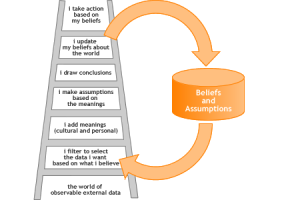 It’s never comfortable being the newcomer. This is especially true when we start a new job, and even more so if that job involves leading an organization or taking charge of an already established team.
It’s never comfortable being the newcomer. This is especially true when we start a new job, and even more so if that job involves leading an organization or taking charge of an already established team.
Three words come to mind when I think about this: Culture, Trust and Change. These are big issues and huge, if you happen to be a new boss. How you address them will often make the difference between a reasonably smooth leadership transition and a very shaky one.
For instance, inserting oneself into an already established culture requires some delicacy and some time spent in learning how people think; what they value; and the assumptions they operate from.
As well, most organizations work from a platform of earned trust rather than assumed trust. As such, if you are an unknown commodity, there will be skepticism about your motives, and the effect your presence will have on the status quo. While we like to think people will readily embrace change, we know that it just isn’t that easy. But, the reality is that change comes with every new leader and the immediate challenge is to find ways to send the message that this is a good thing…or at least, the right thing.
All this needs time and work. The point is, in this world of speed and technology, we have to find ways of accomplishing things faster. That includes expediting the process of knowing and becoming known. The question is, how?
Well, it’s a tricky one…but like most things, not impossible
There is, for instance, the New Manager Assimilation Process, which is a structured way of speeding up your collective orientation. Specifically, it is designed to help new managers quickly establish positive working relationships with their direct reports while also building a solid foundation for the future.
But, whether you decide to use this kind of formal process or a less informal one, know that the first few days, weeks and months as leader, will lay the foundation for how you will work and be perceived in the future.
When I think about inserting myself, as leader, into an established group, these are some things that come up:
Listen
People like to know they are being heard. As a new manager this is particularly important. There will be things they will want me to know about them. There will be other things they will want me to know as well, like what they are proud of, or what worries them. And, they will have ideas to share that will help shape how we move forward together.
Respect what went before
As the new one in town, there will be things that were established before I arrived that will have a lot of value. Rather than take a ‘new broom sweeps clean’ approach to my new role, I would take some time to learn what is good about the way things are.
Be clear about my vision and purpose
As an unknown, people will be curious (and possibly anxious) about what I see as my role; what I want to accomplish and; how my personal beliefs and values align with their own. In short, they will want to be able to see themselves in the picture I create. The more often and consistently I communicate these things, the quicker I will become known.
Be accessible
This is not just about keeping my office door open. It’s also about making myself emotionally available and showing my humanness. I would want to give people an opportunity to know me as a person as well as a boss.
Ask for help
It doesn’t matter what I bring to the new organization, there will always be things I’m simply not going to know. Asking for help gives me the opportunity to learn… and others the chance to show me what they know.
That’s what I think anyway. What do you think?
Note: This post was originally published in November, 2011












